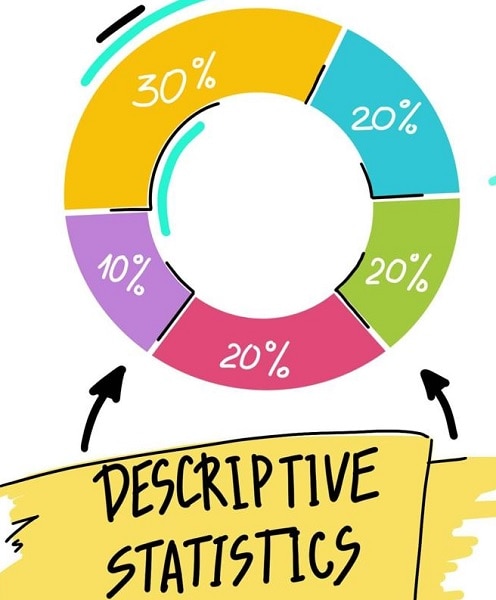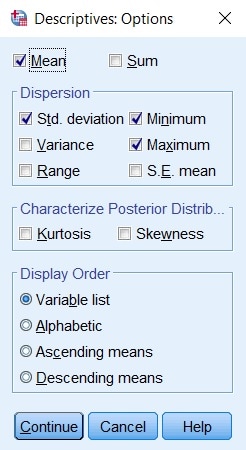An Insights on the Descriptive Analysis
In the UX design process, Descriptive Analysis plays a vital role. It is an important phase which belongs to Quantitative research to understand the requirements in depth. After the analysis, you will get a better understanding of the design needs precisely. In general, there are two types of analysis adopted in the UX design process. They are Qualitative and Quantitative analysis. The Analysis of the measured data is known as Quantitative analysis. It answers questions like how much? How many? Etc. This analysis collects data through online surveys. In the Qualitative findings, you can collect data using the user's actions. It answers questions like why? or how? The data is merely an observation for Qualitative analysis.

Descriptive-analysis
- Part 1: What is a Descriptive Analysis?
- Part 2: What are the 4 Types of Descriptive Analysis?
- Part 3: How to do a Descriptive Analysis?
- Part 4: Software for UX
What is a Descriptive Analysis?
Descriptive Analysis is one of the crucial analysis in the Quantitative research process. In this analysis, you must record data based on the event happenings. It is enough if you collect data based on specific criteria in the user research. You must simply describe what the data is and what does it shows relevant to the design process. In a research point of view, this type of analysis is a measure of data on a particular event. It helps you to maintain large data sensibly. The data collected through this analysis is mere by observation and there is no unique technique or any methods as such.
Based on research, most professionals confuse descriptive analysis and inferential analysis. Statistics is the name given to the data collected through analysis. The former analysis just records data depending on the occurrence of any activity. In the case of the latter analysis method, you must infer with the collected data and conclude by making judgements. There is a vast difference between these two analyses. The descriptive analysis is reliable because you just record data without any assumptions but the inferential analysis type you will impose judgments which is not reliable in many situations. The Descriptive Analysis helps the UX designers to collect data on the user research to assist their design tasks optimally.

What-is-descriptive-analysis
What are the 4 Types of Descriptive Analysis?
There are four common types of descriptive analysis is in practice in the research field. They are Measures of Frequency, Measures of Central Tendency, Measure of Variations or dispersion, Measures of positions. Surf through the below content to enlighten with the four types of Descriptive Analysis.
The measure of Frequency:
As you all know that frequency refers to how many times an event occurs. It is like a count. The data indicates the number of times something happens or it can be how many times you receive a response.
The measure of Central Tendency:
In this type, you will measure a commonly occurring event. You can learn about the distributions in this analysis. Here, comes the mean, median and mode terms which monitor the distribution of data. The 'Mean' refers to the average of all collected data. The middle number in the set of data is 'Median'. The 'Mode' is the common number in the observed data.
The measure of Variations:
Here, you will measure how far the data distribute affecting the mean. In common words, you can understand the intensity of the data spread in this analysis. The extreme variations of data given terms like Maximum, Minimum and Outliners etc.
The measure of Positions:
In this analysis, you will learn where the data stands amidst the competitive scores in the market. It compares with the normal score to identify its position.
In terms of UX design researcher, every descriptive measure occurs based on the business products and services with users. In the measure of frequency, you can measure the number of times the users purchase your product or services within a period. The analysis helps you to analyze the reputation of your product or services in the competitive market. It allows you to enlighten whether your product outstands the other goods in the commercial space. Finally using the descriptive analysis, you will learn where your business stands amidst the competitors.
All these analyses will give you a better understanding of the user's needs. The UX designers can identify the requirements from the user's point of view and come up with the perfect webpage design to reach the target audience effortlessly.
How to do a Descriptive Analysis?
There are ample tools available in the digital space to carry out the descriptive analysis. The common method is employing a simple software like SPSS for optimum results. In this section, you will learn how to do Descriptive Analysis using SPSS tool.
Step 1: In the SPSS environment press 'Analyze -> Descriptive Statistics -> Descriptive'. The 'Analyze' option is available in the Menu bar on the screen.

Analyze-descriptive
Step 2: Now, add desired descriptive to make an analysis. While adding the descriptive you will be able to enter data to it flawlessly. It is enough if you select the items and move it to the next pane of the screen by hitting the centre button. You must enable the check box stating 'Save Standardized values as variable' to compute new standardized values in the added descriptive.

Select-descriptive
Step 3: Finally, tap 'Options' button at the right side of the screen and select the analyze process. You can choose as 'Mean, sum, variance, deviation, maximum, minimum' according to your needs. The tool automatically computes and display the analyses results quickly.

Descriptive-options
The above method is one of the reliable strategies to carry out descriptive analysis effortlessly.
Software for UX
For an effective UX design, you need an incredibly user-friendly tool. The Wondershare Mockitt app is one of the best software in the digital space which satisfies the needs of the designers without any compromises. It is a sophisticated design program with stunning controls to compete amidst the competitive market. The amazing functionalities of this design tool provide you with blissful design experience. A quick analysis of its in-built features is available below.
Incredible features of Wondershare Mockitt app
- Excellent prototyping tool with easy reach of controls.
- The newbie designers feel comfortable to work on this platform due to its friendly interface.
- The 'Asset Library' helps you to design complex tasks quickly as it contains ready to use templates.
- You can customize the 'Widgets and icons' in the Asset library according to your requirements.
- This app allows you to save the personalized design elements in the Asset Library and reuse it in future.

Conclusion
Thus, in this article, you had a deeper discussion on the descriptive analysis. Now, you must be clear on the concepts of analysis which play a crucial part in the UX design process. Analyzing the business and user's needs gives a clear picture for the designers to create a digital presence for the business activities. The Wondershare Mockitt app serves as a boon for the UX designers. It is the perfect tool to satisfy the business needs without compromising on any factors. Many professionals recommend this tool for the long run and they have no regrets because of its stunning features. Connect with this article to explore the functionalities of the amazing design tool Wondershare Mockitt. It is the perfect design partner for the trendy web designers of this century.

